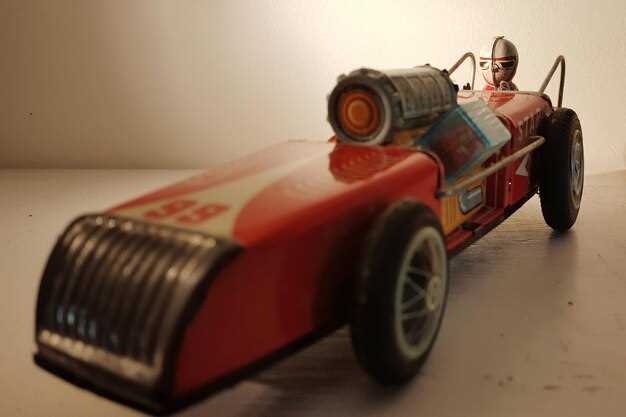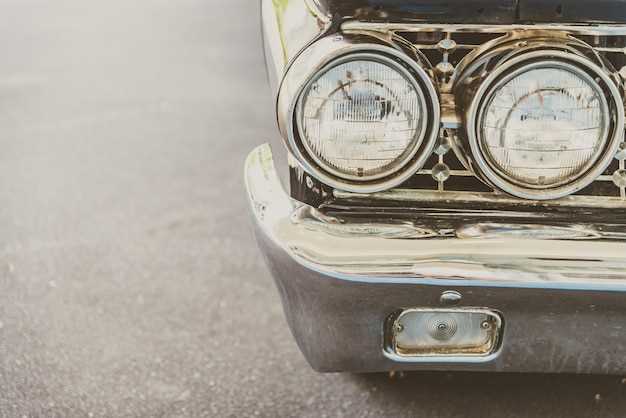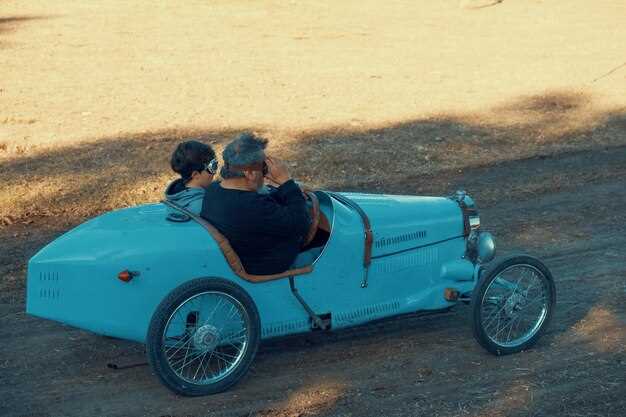
The allure of vintage racing is undeniable, with its rich history and the nostalgic charm of classic automobiles. However, the world of racing these timeless machines presents a unique set of challenges that enthusiasts must navigate. As the competition among racers becomes increasingly fierce, the need for adaptability and innovation is paramount.
Modern advancements in technology and safety regulations have transformed the landscape of motorsport. Vintage cars, often built with outdated materials and designs, may struggle to meet contemporary standards. This disparity can create obstacles for drivers who wish to preserve the authenticity of their vehicles while also ensuring they are safe and competitive on the track.
Moreover, the rising costs associated with vintage car maintenance and upgrades can deter potential racers. As the demand for classic automobiles continues to grow, so too do the prices for parts and restoration services. This financial burden can make it challenging for some enthusiasts to participate in a sport that is already defined by its passion for history and heritage.
Adapting to Modern Safety Standards in Vintage Racing

Vintage racing, while steeped in nostalgia and tradition, faces significant challenges in meeting contemporary safety standards. Many vintage cars were designed long before modern safety regulations were established, which necessitates careful adaptation to ensure the well-being of drivers and spectators alike in a competitive environment. As awareness of safety issues has grown, racing organizations have begun implementing new requirements, often mandating upgrades to older vehicles.
Key adaptations include the installation of modern seatbelts, which provide better restraint during high-speed incidents. Original lap belts, commonly found in vintage cars, fall short of offering adequate protection. Drivers are now encouraged to utilize multi-point harness systems that reduce movement during crashes, enhancing safety significantly.
Roll cages have also become a critical component in vintage racing. Historic models typically lack sufficient structural support to handle the impacts common in modern motorsport. By integrating roll cages designed to meet current standards, vehicles can better protect occupants in case of a rollover or collision, thereby minimizing injury risk.
Modern racing helmets and safety suits must be utilized to offer optimum protection against fire and impact. Advances in materials and design for headgear and apparel address many risks collected from years of race data, providing an invaluable layer of safety for drivers. These enhancements are not merely recommendations; they are essential for participating in sanctioned events.
Moreover, the integration of fire suppression systems has become increasingly commonplace, replacing rudimentary measures found in vintage models. The addition of on-board extinguishers allows for rapid response to potential fires, critical in safeguarding both drivers and vehicles during intense racing conditions.
In conclusion, while vintage racing continues to celebrate historical significance, the integration of modern safety standards is indispensable for ensuring the safety and integrity of the sport. By adapting these regulations effectively, organizers can provide a competitive environment where tradition meets contemporary safety, allowing enthusiasts to enjoy the thrill of racing with greater peace of mind.
Navigating the Competitive Landscape of Classic Car Events
The world of vintage car racing offers enthusiasts a unique blend of nostalgia and competition. As these classic automobiles emerge on the modern racing circuit, participants face a distinct set of challenges that require strategic navigation to succeed.
Understanding the competitive landscape begins with recognizing the diversity of events available for vintage cars. From prestigious concours d’elegance to heart-pounding rally races, each event has its own set of rules, expectations, and standards. Enthusiasts must carefully select events that not only showcase their cars but also align with their competitive goals.
Another key aspect is the preparation of the vintage vehicle itself. Classic cars, while embodying historical significance, often require meticulous maintenance and restoration to remain competitive. Racers must invest in quality parts and expert craftsmanship, which can elevate their chances of performing well against modern machines. Balancing the integrity of the original design with the necessity of performance upgrades is crucial.
Moreover, building a supportive network is essential in navigating this competitive environment. Connecting with experienced vintage car racers can provide valuable insights into best practices and hidden challenges. Forming alliances with mechanics and suppliers who specialize in vintage automobiles can also enhance the overall racing experience.
The competition in classic car events is not solely about speed; it encompasses style, presentation, and adherence to historical accuracy. Judges often evaluate vehicles based on their authenticity and condition, making it imperative for participants to maintain their vehicles in a manner that respects their heritage. This adds an extra layer of complexity to competing successfully.
Ultimately, thriving in the competitive landscape of classic car events requires a blend of passion, knowledge, and strategic planning. By embracing the unique attributes of vintage racing, participants can navigate this intricate field while celebrating the rich history of classic automobiles.
Preserving Authenticity While Enhancing Performance in Vintage Racing

In the realm of vintage racing, the delicate balance between preserving authenticity and enhancing performance presents a unique challenge for competitors. Vintage cars, with their historical significance and classic aesthetics, evoke a sense of nostalgia that many racing enthusiasts cherish. However, as the standards of competition rise, the pressure to upgrade these vehicles for better performance becomes an undeniable factor.
To maintain authenticity, it is crucial to respect the original designs and engineering principles of the vintage cars. Many participants believe that modifications should be limited to those that enhance safety and reliability without compromising the car’s historical integrity. This perspective not only honors the heritage of the automobile but also allows drivers to experience racing in a manner that closely resembles the past.
Nevertheless, advancements in technology provide tempting opportunities for performance enhancements. Modern materials, improved brake systems, and engine tuning can significantly boost a vintage car’s competitiveness on the track. The challenge lies in implementing these upgrades judiciously; modifications must be made thoughtfully to ensure that the car remains a representation of its era while integrating essential improvements for racing efficiency.
Furthermore, racing organizations often impose regulations to ensure that the spirit of vintage racing is upheld. Classes and categories often dictate the extent to which modifications can be applied, allowing enthusiasts to compete in a fair environment that values authenticity yet acknowledges the need for performance upgrades. This structured approach helps maintain a sense of camaraderie among participants, as they navigate the fine line between enhancement and preservation together.
Ultimately, the essence of vintage racing lies in the passion for both the cars and the competition. By fostering a culture that cherishes historical accurate representation while embracing technological advancements, participants can enjoy thrilling races that honor the past while thriving within the dynamics of modern motorsport.



